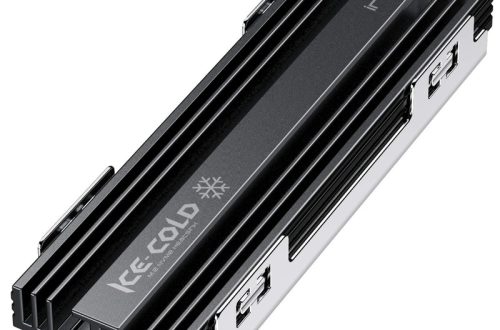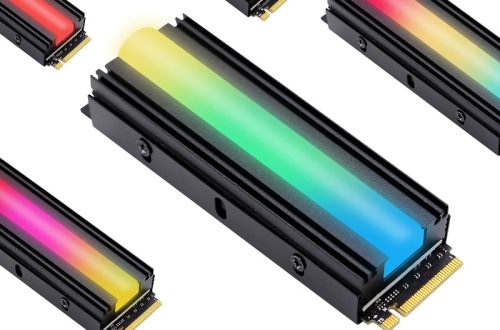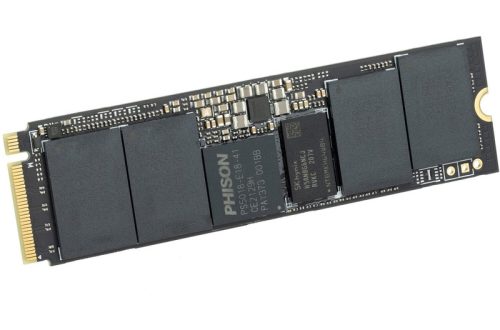What is Quick CPU?
Quick CPU is a potent tool for optimizing system performance. It helps manage and monitor your computer’s central processing unit (CPU) resources efficiently. With Quick CPU, you can adjust your CPU settings such as core parking, frequency scaling, and turbo boost, among others. The goal is to balance power consumption and performance. Users can fine-tune their systems to achieve the best possible speed while maintaining stability. Quick CPU provides a user-friendly interface that simplifies the customization process. Even users with limited technical knowledge can improve their computer’s performance using this software. It’s ideal for gamers, content creators, and professionals who require maximum efficiency from their PCs.
Core Features of Quick CPU
Quick CPU stands out with several key features. Each serves to fine-tune and optimize your system’s performance. These core features include:
Core Parking Adjustments:
Quick CPU can enable or disable core parking. This process manages the number of CPU cores in use. When fewer cores are active, power consumption drops. But for demanding tasks, more cores can be activated to boost performance.
CPU Frequency Scaling:
The tool allows for real-time adjustments to the CPU frequency. By scaling up the frequency, Quick CPU helps your system tackle intensive tasks more efficiently. Scaling down saves energy when full power is not necessary.

Turbo Boost Management:
Quick CPU provides control over Intel’s Turbo Boost technology. This feature allows the CPU to run above its base clock speed when needed, providing an extra burst of speed.
System Monitoring:
It offers real-time monitoring of CPU performance. This includes temperature, usage, and power consumption metrics. Monitoring helps in identifying the need for adjustments.
Custom Profiles:
Users can create custom profiles for different tasks. Each profile can have unique settings for core parking, frequency scaling, and other options. This ensures optimal performance for any activity.
These features, when used together, make Quick CPU a comprehensive tool for enhancing your computer’s efficiency and processing power. They are designed to be accessible to users of all levels, allowing everyone to benefit from an optimized PC experience.
How Quick CPU Improves Performance
Quick CPU boosts computer performance through several mechanisms, each closely tied to its core features. Here’s how it enhances system efficiency and speed:
Optimizes Core Use:
By managing core parking, Quick CPU ensures that the right number of CPU cores are active to meet the current demand. This means more cores for challenging tasks and fewer when your system isn’t pushed to its limits, optimizing performance and energy use.
Adjusts CPU Speed on Demand:
The software’s frequency scaling allows the CPU to increase speed for heavy-duty tasks and slow down to conserve energy when less power is needed. This dynamic adjustment makes resource usage smarter and more efficient.
Boosts with Turbo:
With Quick CPU, you gain control over the turbo boost. When activated, it enables your CPU to exceed standard speeds temporarily, offering a performance spike just when it’s required.
Real-Time Monitoring:
By monitoring CPU activity, Quick CPU helps identify bottlenecks or overheating issues. This lets users make informed decisions about adjustments for optimal performance.
Creates Custom Profiles:
Tailoring settings for specific applications or tasks is made easy with custom profiles. This personalization ensures that your system performs best for the task at hand, whether it’s gaming, editing, or general use.
Quick CPU provides a user-friendly platform that enhances your computer’s abilities without requiring deep technical expertise. The cumulative effect of these features is a smoother, faster, and more reliable computing experience.

Installing Quick CPU
Installing Quick CPU on your computer is a straightforward process. Below, we outline the steps to ensure a smooth installation:
- Download the Software: Visit the official Quick CPU website to download the latest version of the software. Ensure you select the version compatible with your operating system.
- Run the Installer: Once the download is complete, locate the installer file, typically in your ‘Downloads’ folder. Double-click the file to start the installation process.
- Follow the Instructions: The installer will guide you through the installation. Follow the on-screen instructions carefully. Agree to the license terms and select the destination folder for the application.
- Complete the Installation: The installer will proceed to install Quick CPU. Wait for the installation bar to reach 100% and click ‘Finish’ once it’s done. You may be prompted to restart your computer.
- Launch Quick CPU: After the restart, you can find Quick CPU in your ‘Start’ menu or the folder you installed it in. Double-click the Quick CPU icon to open the program and begin optimizing your PC’s performance.
By following these simple steps, you can ensure that Quick CPU is correctly installed on your system. This will set the foundation for optimizing your computer’s performance and taking full advantage of the software’s capabilities. Remember, if you experience any issues during installation, Quick CPU’s support website offers troubleshooting advice and contact information for further assistance. Keep the keyword ‘quick cpu’ in mind, as you’ll be using the software to make quick and significant improvements to your computer’s efficiency.
Configuring Quick CPU for Optimal Results
To get the best performance from Quick CPU, proper configuration is key. Here’s how you can configure Quick CPU for optimal results.
- Set Up Core Parking: Define the exact number of CPU cores needed for your usual tasks. Less intensive activities may require fewer cores, saving energy.
- Adjust CPU Frequency: Calibrate the frequency scaling to suit the type of work you do. Higher frequencies for demanding tasks and lower for everyday use.
- Manage Turbo Boost: Turn on turbo boost when you need that extra burst of power. Otherwise, keep it off to conserve energy.
- Monitor System Metrics: Keep an eye on your CPU’s temperature and usage. Make adjustments to prevent overheating and reduce power consumption.
- Create and Use Profiles: Set up different profiles for gaming, working, or streaming. Switch between them based on your current needs.
These steps will make sure that Quick CPU works at its best. They balance your system’s performance with energy use. You get a faster computer without wasting power. Remember to review the settings regularly. This ensures they still match your computing habits and tasks.
Quick CPU vs. Other Performance Enhancing Software
When comparing Quick CPU to other performance enhancing software, it’s important to consider several factors. Here is how Quick CPU stands out from the competition:
- User-Friendly Interface: Quick CPU has a simple, intuitive interface, making it accessible to users of all skill levels.
- In-depth Customization: It allows for detailed adjustments to core parking, CPU frequency, and turbo boost settings.
- Integrated Monitoring: With built-in system monitoring, Quick CPU helps you keep an eye on CPU metrics in real time.
- Custom Profiles: The ability to create unique profiles for various tasks is a feature not found in all tools. This caters to customized performance needs.
- Free to Use: Unlike some options that require payment, Quick CPU offers its core functionality at no cost.
In essence, Quick CPU provides comprehensive tools for PC optimization that are a notch above others. It stands out with the ease of use and deep customization options that strike a fine balance between performance and energy efficiency.
While other software may offer some similar features, Quick CPU’s user-centric approach puts it ahead of many alternatives. It offers flexibility and control over system performance, without overwhelming the user. This combination of features and user-friendliness makes Quick CPU a preferred choice for many looking to boost their computer’s performance.

Safety and Security Aspects of Using Quick CPU
When using any software to enhance system performance, it is crucial to consider its safety and security aspects. Quick CPU is designed with these considerations in mind to ensure that it not only boosts your PC’s capabilities but does so without compromising safety. Here are the safety and security features of Quick CPU:
- Secure Download: Always download Quick CPU from its official website. This step prevents malware or viruses that might come from third-party sites.
- Regular Updates: The developers of Quick CPU release updates that often include security patches. Keeping the software up to date ensures protection against newfound vulnerabilities.
- No Overclocking Risks: Unlike some performance tools that push components beyond their limits, Quick CPU optimizes within safe parameters. It doesn’t force overclocking, which can cause heat buildup and damage.
- Privacy Compliant: Quick CPU doesn’t collect personal data. It operates locally on your computer, and your information stays private.
- Stability Focus: The core parking and frequency scaling features of Quick CPU aim for stability. A stable system reduces the risk of crashes and potential data loss.
By adhering to these safety and security practices, Quick CPU provides a reliable tool for optimizing your computer’s performance without the risks associated with some other performance-enhancing software. As with all system optimization tools, it is advised to create system restore points before making significant changes. This ensures you can revert your system back to a previous state if needed.
Best Practices for Maintaining Performance with Quick CPU
To sustain peak performance using Quick CPU, routine maintenance is essential. Following these best practices will help keep your computer running smoothly:
- Stay Updated: Ensure Quick CPU is always up to date. Developers release updates that can enhance efficiency and security.
- Regular Monitoring: Use Quick CPU’s monitoring tools to track CPU usage and temperature. Spot potential issues before they affect performance.
- Balanced Settings: Avoid extreme settings for core parking and frequency scaling. Opt for a balance that suits your daily tasks.
- Use Profiles Wisely: Create profiles for different scenarios but switch to the appropriate one when needed. This avoids unnecessary strain on your CPU.
- Avoid Multitasking Overload: Keep multitasking to a practical level. Overburdening the CPU with too many tasks can slow down your computer.
- Dust Control: Physically clean your computer to prevent dust build-up, which can lead to overheating and reduced performance.
- Backup Configurations: Save your Quick CPU configurations. If an update or system change affects performance, you can restore your settings.
By incorporating these simple but effective habits into your routine, you can maximize the benefits of Quick CPU. A well-maintained system equals consistent performance. Regular upkeep paired with the smart use of Quick CPU can lead to a long-lasting and efficient computing experience.




